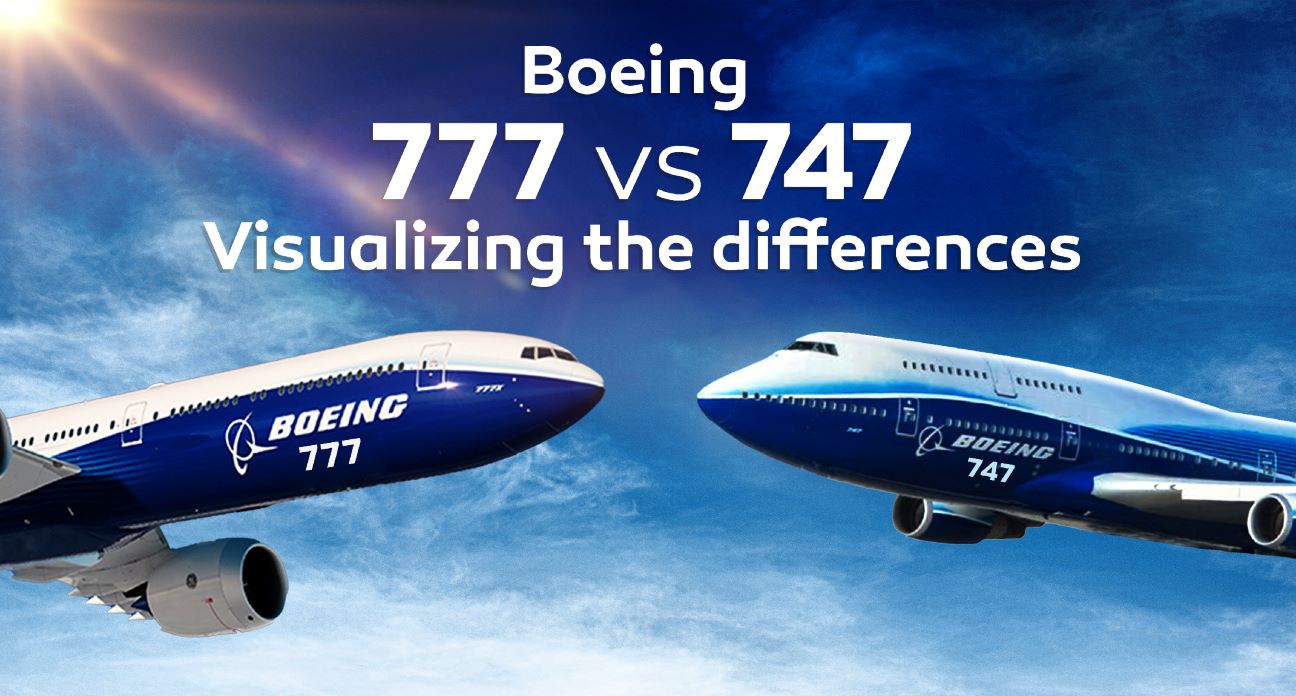Comparing Giants: Is the 777X Larger Than the 747?
In the realm of aviation, few aircraft capture the imagination and admiration of both experts and enthusiasts alike as the Boeing 747 and the newer Boeing 777X. These two giants of the skies not only signify technological advancement but also embody the evolution of commercial aviation design. As the 777X enters the scene, comparisons with the iconic 747 are inevitable, especially when it comes to their size. This article delves into the dimensions and capabilities of these behemoths, aiming to determine which of these Boeing giants truly deserves the title of the largest.
Aviation Titans: The 777X vs. the Iconic 747

The Boeing 747, often affectionately dubbed the “Queen of the Skies,” has been an aviation staple since its introduction in 1969. It revolutionized air travel with its unique humpbacked design, providing unprecedented passenger capacity and range. Over the decades, the 747 has seen various iterations, including the 747-400 and the most recent 747-8. Each version brought enhancements in fuel efficiency, speed, and passenger comfort, solidifying its place as a legend in the aviation industry.
Enter the Boeing 777X, the latest in Boeing’s long line of twin-engine aircraft. Designed to succeed the popular 777 series, the 777X brings to the table remarkable advancements in aerodynamics, engine technology, and passenger amenities. With its introduction, the 777X aims to maintain Boeing’s leadership in the long-haul market by offering airlines a more economical and environmentally friendly option. The aircraft features cutting-edge composite wings with folding wingtips, allowing it to have greater wingspan while still fitting into existing airport gates.
Despite their differences in design and engineering, the comparison between the 747 and the 777X is inevitable due to their roles as Boeing’s flagship long-haul aircraft. While the 747 has been a staple for decades, the 777X represents the future, boasting cutting-edge technology and improved efficiency. Analyzing their dimensions and configurations is crucial to understanding how the 777X stacks up against its illustrious predecessor.
Size Matters: Which Boeing Behemoth Reigns Supreme?

When it comes to sheer size, both the 747 and 777X are monumental achievements in aviation engineering. The 747-8, the latest version of the 747, measures 250 feet and 2 inches in length, making it the longest commercial aircraft in the world until the introduction of the 777X. The 747-8’s wingspan stretches to 224 feet and 7 inches, and its distinctive humpbacked upper deck adds to its iconic silhouette, allowing for additional passenger or cargo space.
The Boeing 777X, particularly the 777-9 model, surpasses the 747-8 in length, reaching 251 feet and 9 inches, thus claiming the title of the longest commercial aircraft. However, its wingspan is even more impressive at 235 feet and 5 inches with the wingtips extended, a feature made possible by the innovative folding wingtip design. This feature allows it to maintain a wingspan of 212 feet and 8 inches when docked, ensuring compatibility with most airport gates designed for smaller wingspans.
While the 777X edges out the 747 in terms of length, the true comparison lies in their passenger capacities and cabin configurations. The 747, with its double-deck design, can accommodate more passengers in certain configurations than the twin-deck 777X. Yet, the 777X offers a wider fuselage and more modern amenities, arguably providing a more comfortable and efficient experience for passengers. Ultimately, the decision of which aircraft reigns supreme may come down to the specific needs and preferences of the airlines and passengers they serve.
In the ongoing evolution of commercial aviation, the comparison between the Boeing 747 and the 777X highlights the strides made in aircraft design and technology. While the 747 remains an icon of the skies, revered for its unique design and historic impact, the 777X represents the future, pushing boundaries with its advanced engineering and environmentally conscious features. Both aircraft have their merits, and the determination of which is truly larger depends on various factors, including length, wingspan, and passenger capacity. As the aviation industry continues to grow and innovate, these giants will continue to inspire awe and admiration among travelers and aviation professionals alike.



